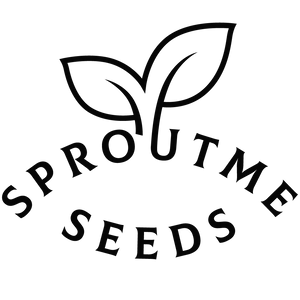Dill
Dill is a flavorful and aromatic herb that is widely used in cooking, particularly in pickling and seasoning dishes. Growing dill at home ensures a fresh and readily available supply of this versatile herb for culinary uses.
Preparing for Growing:
- Selecting a planting location: Choose a sunny location with well-drained soil.
- Soil preparation: Prepare the soil by loosening it to a depth of about 8 inches and incorporating organic matter like compost to improve fertility and drainage.
- Purchasing or preparing containers/pots: If growing dill in containers, ensure they have drainage holes at the bottom and are at least 12 inches deep to accommodate the herb's long taproot.
Starting from Seeds Indoors:
- Seed preparation: Dill seeds do not require any special preparation.
- Choosing suitable pots/containers: Use seed trays or small pots filled with seed-starting mix.
- Sowing and caring for seeds indoors: Sow seeds thinly on the surface of the soil and cover lightly. Keep the soil consistently moist and place the containers in a warm, sunny location.
Starting from Seeds Outdoors:
- Soil preparation: Prepare the outdoor planting area as described earlier.
- Selecting appropriate timing and method for outdoor sowing: Plant dill seeds directly in the garden after the last frost date in your area. Scatter the seeds over the prepared soil and cover lightly with a thin layer of soil.
- Caring for seeds outdoors: Keep the soil evenly moist until seeds germinate, which usually takes 7-10 days.
Growing in Containers/Pots:
- Selecting suitable plants for containers: Choose compact dill varieties suitable for container growth.
- Container and soil preparation: Use well-draining containers filled with quality potting mix.
- Sowing or transplanting plants into containers: Sow seeds or transplant seedlings into containers following the same procedure as outdoor planting.
- Caring for container plants: Place containers in a location with full sun and water regularly to keep the soil evenly moist.
Transplanting to Garden:
- Soil and planting site preparation: Choose a location with well-drained soil and full sun.
- Correct timing and method for transplanting: Transplant seedlings outdoors after the last frost date, spacing them 12 inches apart.
- Post-transplant care: Water the transplanted seedlings thoroughly and provide support if needed as they grow.
Plant Care:
- Watering: Keep the soil consistently moist, especially during dry periods.
- Fertilizing: Apply a balanced fertilizer every 4-6 weeks or use compost to enrich the soil.
- Weeding: Regularly remove weeds to prevent competition for nutrients and water.
- Pest and disease management: Monitor for pests like aphids and caterpillars, and treat as needed with organic remedies. Watch for fungal diseases and ensure good air circulation around plants to prevent issues.
Harvesting:
- Determining when plants are ready for harvest: Harvest dill leaves and seeds when they reach maturity, typically about 8-10 weeks after planting.
- Harvesting and storage guidelines: Snip leaves and seeds as needed for immediate use. Store fresh dill in the refrigerator wrapped in a damp paper towel or preserve by freezing for future use.
When to Start from Seeds by USDA Plant Hardiness Zones:
- Dill is typically grown as an annual herb and can be started from seeds outdoors after the last frost date in your area.
Fast Facts:
- Planting depth: Sow seeds ¼ inch deep.
- Seed spacing: Scatter seeds thinly or space them about 6-8 inches apart.
- Plant spacing: Thin seedlings to 12 inches apart.
- Number of seeds per pot/container: Sow several seeds per container and thin to the strongest seedling.
- Water preferences: Dill prefers consistently moist soil.
- Sun preferences: Full sun is ideal for dill growth.
- Soil type and other important factors: Well-draining soil is essential for dill cultivation.
- Companion Planting: Dill attracts beneficial insects like ladybugs and lacewings and is often planted near cabbage, broccoli, and other brassicas to repel cabbage worms.
- Temperature Preference: Dill prefers cooler temperatures but can tolerate some heat if provided with adequate moisture.
- Days to Germination: Seeds typically germinate in 7-10 days.
- Days to Harvest: Leaves and seeds can be harvested within 8-10 weeks after sowing.







